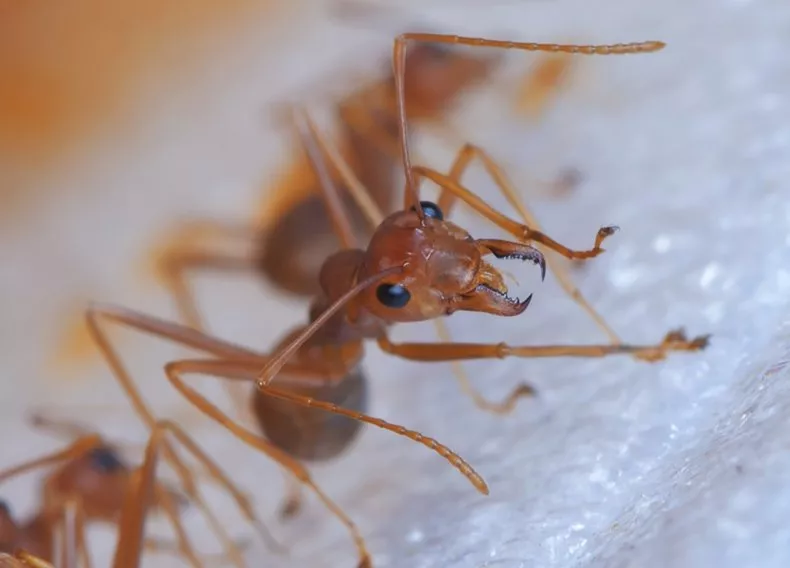Whenever fire ants infiltrate your zone, there's no time to waste. Fire ants have been working hard for months before their mounds become visible, invading your land from underneath. These invaders have little regard for limits. To hold out against fire ants, you must first understand their vulnerabilities.
Eating invasive fire ants may be one way to get rid of them and protect yourself from their painful stings. According to a study published in the journal Biological Invasions, intrusive and dangerous fire ants might be eaten by lizards to protect them from being stung, with lizards who ate the ants having a greater (and more effective) immune response.
Fire ants are quite a harmful ant species found all over the planet. Solenopsis Invicta, often referred to as the red foreign fire ant, is an invasive species and a pest in several nations, including the United States, Australia, China, and Taiwan.
Pestering Invasive Pests to Human
The FDA claims that more than $5 billion is spent yearly in the United States on medical care and damage, including control in fire ant-infested areas, and $750 million in agricultural damage, including veterinarian expenses, animal loss, and crop loss.
The sting in fire ants consists largely of alkaloid components with a tiny amount of proteins; when most humans are bitten, these molecules promote inflammation, which generates a blister or pustule at the location of the sting, says Laura Vogel, an Immunology Professor at the Illinois State University, as she told Newsweek.
However, the revelation that eastern fence lizards consume such invading fire ants to build immunity to their severe stinging may have opened up a new management path.

Fire ants are invasive species, with new research finding that lizards eat them to gain immunity from their venom.
ALSO READ: Black-Imported Fire Ants Use Sand Grains to Avoid Drowning While Foraging Liquid Food
Protection Against Fire Ants Stings
Pesticides placed with corn grit bait and chemical methods on a complete ant mound are now used as control measures. Pouring hot boiling water on an ant mound may also assist in destroying a colony, albeit this normally only kills around 60% of the ants in the hive, as Healthline suggests.
Is feeding the ants a smarter and more useful strategy to manage the invading population while protecting humans from their stings?
One suggestive method to protect people is immunotherapy, in which escalating amounts of venom are administered sensibly over several months to elicit a shift in the immune system, as explained by Vogel. Through the said method, the individual produces certain antibodies rather than IgE antibodies, allowing people to tolerate the chemical in the future.
According to Vogel, oral immunotherapy induces tolerance in patients with food intolerances, including peanut butter food intolerances. It might also be employed in a fire ant stinging. However, Professor Vogel believes this is not the ideal strategy because there are more successful and far less harmful ways to kill these ants while simultaneously developing resistance to their venom.
Fire Ants Role in the Ecosystem
Numerous ant species are omnivorous, like imported fire ants (they eat just about anything). Some arthropods are an important part of the fire ant meal (insects, ticks, mites, and other groups). Certain nuisance insect populations have been proven to be reduced by fire ants. Tick numbers, for instance, may be reduced in fire ants-infested meadows and lawns. They may lower chigger (mite) numbers and feast on flea eggs and hatching roaches in the house. Cotton and sugarcane producers, in particular, value the ant's predatory behavior since it eats boll weevils, larvae, and other cotton pests. They feast on the sugar borer in sugarcane fields, reducing the number of chemicals used to control such pests.
Imported fire ants feed on those rodents, including reptiles in the wild. This attribute may be advantageous if those same creatures are pests. Nonetheless, in the ecological processes, balance and eradication of these species may limit their accessibility as a food supply for other organisms, such as birds of prey (raptors).
RELATED ARTICLE: Some Lizard Species Consume Fire Ants; How Is This Consumption Habit Affecting the Species' Survival?
Check out more news and information on Animals in Science Times.



![Earth's Quasi-Moon Kamo‘oalewa Could Originate From Lunar Surface Not Asteroid Belt [Study]](https://1721181113.rsc.cdn77.org/data/thumbs/full/53275/89/56/50/40/earths-quasi-moon-kamo-oalewa-could-originate-from-lunar-surface-not-asteroid-belt-study.png)










